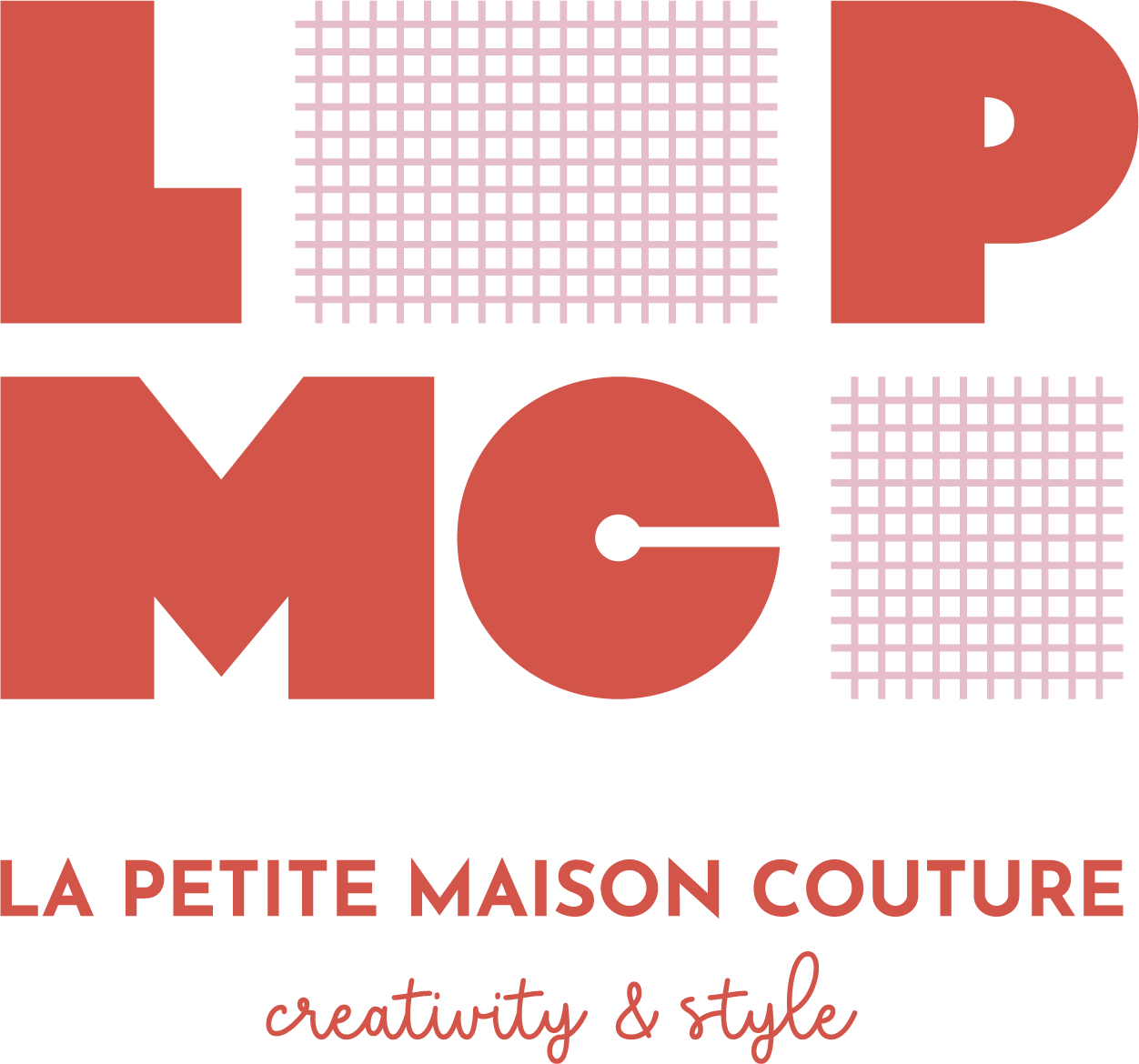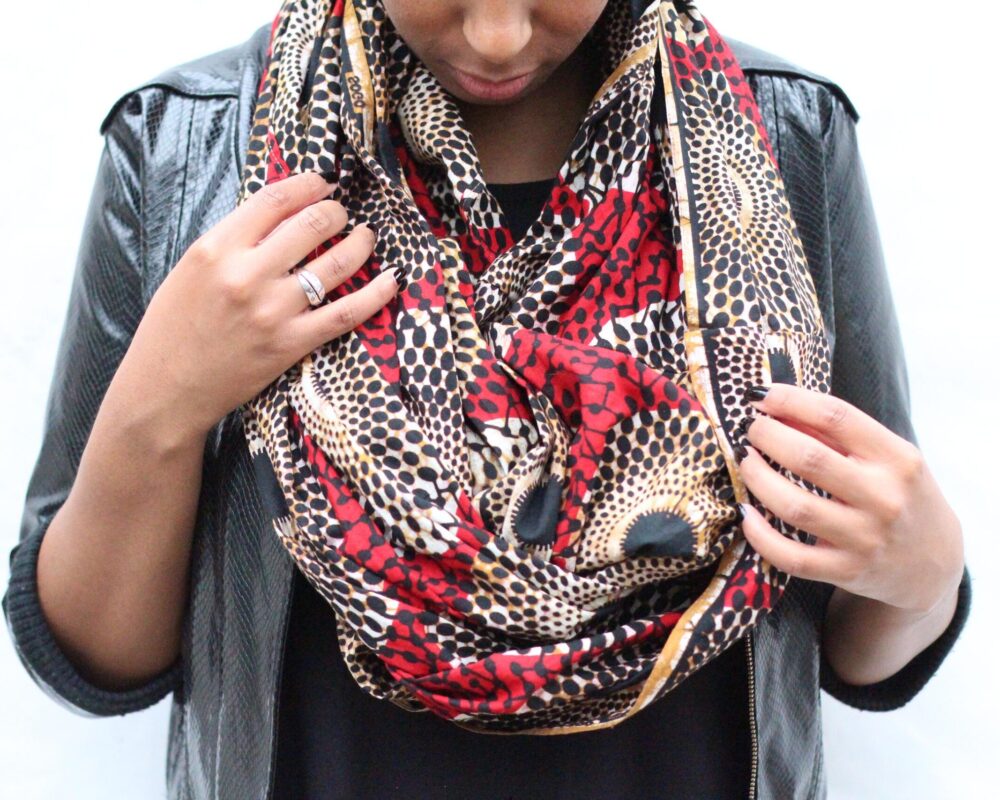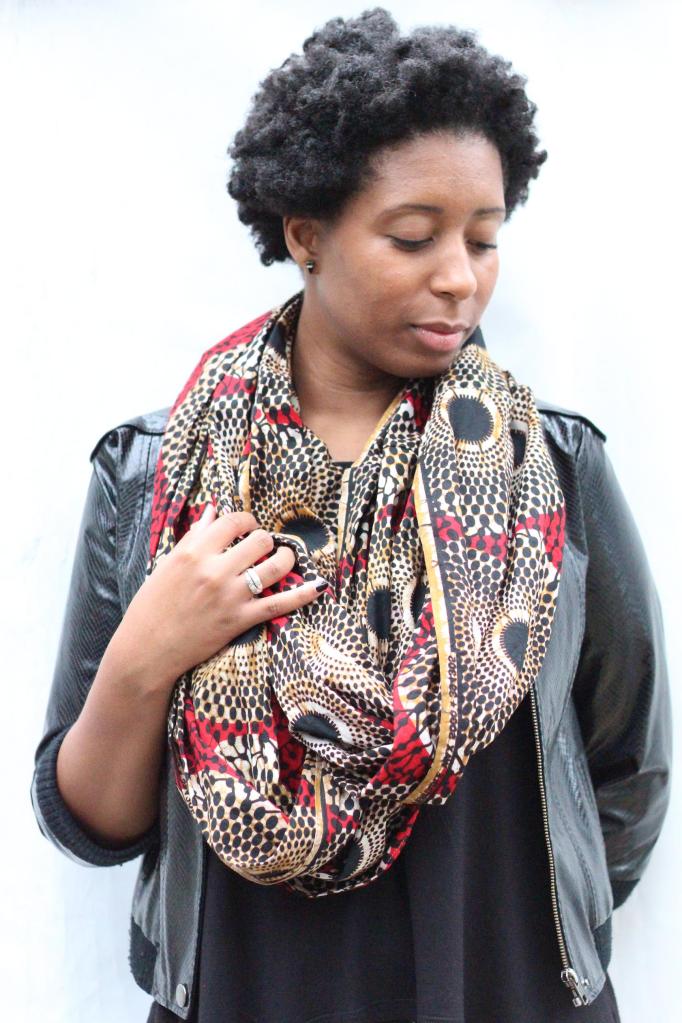Super projet à réaliser surtout lorsqu’on débute en couture.
1.Ce foulard est constitué de deux rectangles mesurant chacun 125cmx55cm.
2.Les deux extrémités des largeurs ont été cousues ensemble afin de former un cercle/cerceau.
 3. Une fois le cercle fermé, réaliser un mini ourlet sur les deux bords vifs (sur le bord des longueurs). Si le mini ourlet s’avère trop fastidieux, appliquer un biais; ceci peut apporter un effet différent. Toutefois ici, Stéphanie qui aime le Wax (nom donné au tissu africain en général), a coupé son tissu sur les lisières, ce qui apporte également du style. L’un des avantages à couper le tissu en utilisant la lisière comme bord vif, est qu’il n’est pas nécessaire de faire un ourlet car le tissu ne s’effilochera pas.
3. Une fois le cercle fermé, réaliser un mini ourlet sur les deux bords vifs (sur le bord des longueurs). Si le mini ourlet s’avère trop fastidieux, appliquer un biais; ceci peut apporter un effet différent. Toutefois ici, Stéphanie qui aime le Wax (nom donné au tissu africain en général), a coupé son tissu sur les lisières, ce qui apporte également du style. L’un des avantages à couper le tissu en utilisant la lisière comme bord vif, est qu’il n’est pas nécessaire de faire un ourlet car le tissu ne s’effilochera pas.
~~~~~~~~
Le résultat: Facile et parfait. Le tissu va bien à sa carnation.
________________________________________________
[English]
This is a cool project for beginners.
1.This infinity scarf was made out of 2 rectangles of 125cmx55cm each.
2.The ends of the width have been sewed together in order to form a circle.
3.Once the circles closed, hem the raw edges (all along the sides). If the hemming seems to be difficult as it must be small, you can choose to apply some bias binding. In fact bias binding can also bring another style. However here, Stephanie who really loves Wax (African prints) cut one side of the rectangles along the finished edge of the fabric, and this also can add a little style. In fact one of the advantages of cutting along the finished edge is that heming is not necessary, as the finished edges do not fray.
~~~~~~~~
Result: Easy and perfect. The fabric suits her skin tone.
***** Cet article est dans la presse! // This post is in the press! *****









Magnifique, très beau travail !
Eh oui Clem! ça y est! Elle y est à fond. Bravo en tout cas Stéphanie, ça te va à ravir.
Vraiment très réussi!!!!
Génial! Je vais essayer 🙂
Super!!! Et envoi nous une photo par la suite 🙂
Bonjour,
Où peut-on trouver ce tissu vraiment magnifique ?
Merci pour votre réponse !
Pascale
Coucou Pascale, je l’ai trouvé à Paris dans le 18ème, rue des poissonniers (près du marché africain). De toutes façons dans la zone il y a de nombreux magasins qui font différents types de tissus africains, tu auras l’embarras du choix! A bientôt!
Merci pour ta réponse. Malheureusement j’habite dans le Rhône et je cherche désespérément sur internet depuis plusieurs jours…
Je viens de regarder rapidement et il ya pas mal de tissus africains en ligne. A moins que tu cherches exactement celui-ci?
OUI, il me plait vraiment beaucoup…